How much do you know about our 35th President, John Fitzgerald Kennedy?
He’s the second of nine children born to Joseph and Rose Kennedy, sort of American royalty if you will, and as such, it seems fitting to talk about his dad for a minute.
Joseph was an American businessman and financier who served in government commissions in Washington, D.C. (1934–37), and as ambassador to Great Britain (1937–40). He was a bank president at age 25 and a millionaire at 30. He became a shipbuilder, a motion-picture tycoon, and a heavy contributor to the Democratic Party; many have accused him of having also traded in bootleg liquor during Prohibition. In five years (1919–24) as manager of the stock division of Hayden, Stone and Company, an investment-banking firm, he mastered the art of stock-exchange manipulation. Striking out on his own, he became a brilliant plunger in the bull market of the 1920s. He retired early in 1929, having acquired enough capital to establish a million-dollar trust fund for each of his children (worth about 14M in today’s market). Then, as chairman of the Securities and Exchange Commission (1934–35) under Pres. Franklin D. Roosevelt, Kennedy outlawed the very speculative practices that had made him rich.
Rose was the daughter of the mayor of Boston.
He expected his sons to prepare for public life and his daughters to be ready for marriage to distinguished men who would become “naturalized” Kennedys. The children were encouraged to read The New York Times at an early age, and small talk was not allowed at the dinner table. Instead, the family discussed national issues, sometimes with consequences not seen until years later. Joseph, Jr., for example, became an isolationist and John an ardent advocate of U.S. participation in world affairs; Robert, perhaps because of the age gap, became shy—an affliction he battled throughout his life.
The family experienced its first misfortune when Rosemary was found to be mentally ill. Then tragedy befell Kathleen. In 1944 she married an Englishman, William Cavendish, marquess of Hartington; that same year Hartington was killed during the Allied invasion of Normandy. Four years later she herself died in a European plane crash. Joseph Kennedy had expected his eldest son to be the first Kennedy to run for public office, but young Joe was killed too, in 1944, during the war. Thus, the family’s political standard passed to the next eldest son, John, who had planned to pursue an academic or journalistic career. John F. Kennedy served as U.S. president for 1,037 days before being assassinated in 1963; the role played by Joseph Kennedy in his son’s narrow victory over Richard Nixon for the presidency in 1960 has long been a subject of controversy. Robert F. Kennedy, who served as U.S. attorney general and as senator from New York, announced his candidacy for the presidency in mid-March 1968, but he too was assassinated, less than three months later.
Joseph Kennedy was invalided in Hyannis Port by a stroke for several years and died at age 81. Rose Kennedy survived her husband by 25 years, dying at Hyannis Port on January 22, 1995, at age 104. ~ Britannica.com

His siblings went on to become notable in their own rights. In order by birth:
- Joseph, Jr. died in 1944 at age 29 when, serving as a Navy pilot during WWII, his plane exploded during a secret mission against a German rocket-launching site. His grieving father told John (Jack as he was known) that it was now his duty to fulfill the destiny once intended for Joe, Jr. – becoming the first Catholic president.
- John (JFK), a dutiful son, abandoned his plans to become a journalist.
- Rosemary began to exhibit some mild retardation as a child, which developed into mood swings, sometimes violent. Her father ordered a prefrontal lobotomy when she was 23, which left her permanently incapacitated, included difficulty speaking. She was summarily institutionalized in a facility in Wisconsin when she lived until 2005, dying at the age of 86.
- Kathleen died in a plane crash over France in 1948. She was 28. While she was in college (1940), she began volunteering for the American Red Cross. She also planned benefit luncheons and fashion shows for the Allied Relief Fund to aid British seamen disabled in the war, before moving on to work on the Times-Herald newspaper in Washington, DC . She was her own royalty, marrying William Cavendish, the Marquess of Harington (making her lady Cavendish) who died in combat just four weeks after their wedding.
- Eunice became the mother of Maria Shriver. Eunice founded Camp Shriver in 1962 for people with intellectual disabilities, which became the Special Olympics in 1968. She died of a stroke at the age of 88 in 2005.
- Patricia married and divorced actor, Peter Lawford. After the divorce, she battled alcoholism and tongue cancer. She died of pneumonia in 2006.
- Robert achieved a Harvard Law degree and became a lawyer for the US Department of Justice. His brother, JFK appointed him 64th US Attorney General where he served from 1961-64. He then became a Senator for New York. He was assassinated in 1968 just after winning the Democratic Primary. He was 42.
- Jean lived the longest, dying peacefully in her home in 2020 at the age of 92. She was the Ambassador to Ireland, and founded Very Special Arts – a non-profit dedicated to creating a society where the disabled can participate in the arts. In 2011, she was awarded the Presidential Medal of Freedom by President Obama for her charitable work.
- Edward (most know him as Ted) also became a lawyer. He was injured in a plane crash in 1964, and also a car crash in 1969 (Chappaquiddick). He ran for president in 1980, but lost to Jimmy Carter. He was the 4th longest continuously serving Senator (47 years), and the second most Senior Senate member. He died in 2009 of brain cancer.
Let’s get back to some information on our actual subject. Did you know he suffered miserably with chronic back pain? The first injury most likely occurred when he was playing football at Harvard, it was further aggravated by his service in the Navy. Jack joined the Navy in 1941. He failed physicals by both the Army and Navy (due to back pain), and it was only the influence of his father that persuaded the Navy to take him on. Two years later he was sent to the South Pacific, where he was given command of a Patrol-Torpedo (PT) boat. In August 1943, a Japanese destroyer struck the craft, PT-109, in the Solomon Islands. Kennedy helped some of his marooned crew back to safety and was awarded the Navy and Marine Corps Medal for heroism. Wanna know what he did that was so heroic? He towed a badly wounded crewman with the strap of his life jacket clenched between his teeth for a five-hour swim to a nearby island!
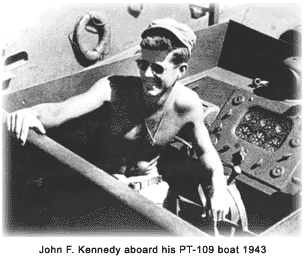
Almost every day of Kennedy’s adult life, he experienced debilitating back pain, especially in the lumbar spine and the sacroiliac joints. Many times, his back was so stiff from pain and arthritis that he could not even bend over to tie his shoes.
Some physicians have argued that the rigid back brace he wore while sitting in the presidential limousine on Nov. 22, 1963, contributed to his death. After the first, non-fatal gunshot struck him, Kennedy was unable to bend down. Instead of crumpling to the bottom of the car, the stiff brace held him upright and he remained in Oswald’s gun sight so that the killer was able to shoot the president in the head.
But Kennedy’s most serious health issue was Addison’s disease. This is an insufficiency of the adrenal glands, the organs which produce the vital hormones that help control sodium, potassium, and glucose levels in the blood, and mediate the body’s reactions to stress. Addison’s disease patients often begin their illness by experiencing severe diarrhea, vomiting, fatigue and low blood pressure. If left untreated, it is a life-threatening disease. Since the late 1930s, doctors have been able to manage this serious illness with the prescription of corticosteroids, which, according to his biographer Robert Dallek, Kennedy probably began taking in one form or another since at least 1947, when he was officially diagnosed with adrenal insufficiency. Some reports, however, claim he may have taken the medication earlier. The chronic use of steroids over his lifetime likely caused osteoporosis of various bones in his body, most notably his spine, where he suffered from three fractured vertebrae.
During his presidency, Kennedy was also treated with a slew of opiate pain killers, local anesthetic (lidocaine) shots for his back pain, tranquilizers such as Librium, amphetamines and stimulants, including Ritalin, thyroid hormones, barbiturate sleeping pills, gamma globulin to stave off infections, as well as the steroid hormones he needed to keep his adrenal insufficiency at bay. According to The New York Times, during the Cuban missile crisis in October of 1962, the president was prescribed “antispasmodics to control colitis; antibiotics for a urinary infection; and increased amounts of hydrocortisone and testosterone along with salt tablets to control his adrenal insufficiency and boost his energy.” ~pbs.org
Following his military service, he began his road to the White House in 1946, serving in Congress for 14 years before running for president.
He met Jackie at a dinner party in Washington in 1952, when he was a Congressman and Jackie was working as a photographer for the Washington Times-Herald. They married in 1953. He was 36, she was 24. There were more than 20 attendants in the wedding party, 800 guests at the ceremony, and 1,200 at the reception – despite the fact that Jackie wanted a small, simple wedding and dress. Joseph Kennedy, Sr. had other aspirations. He was grooming the public for John’s appearance as a President.
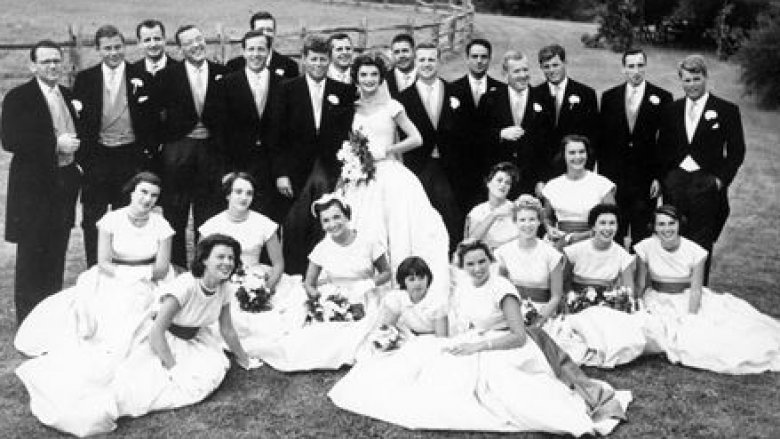
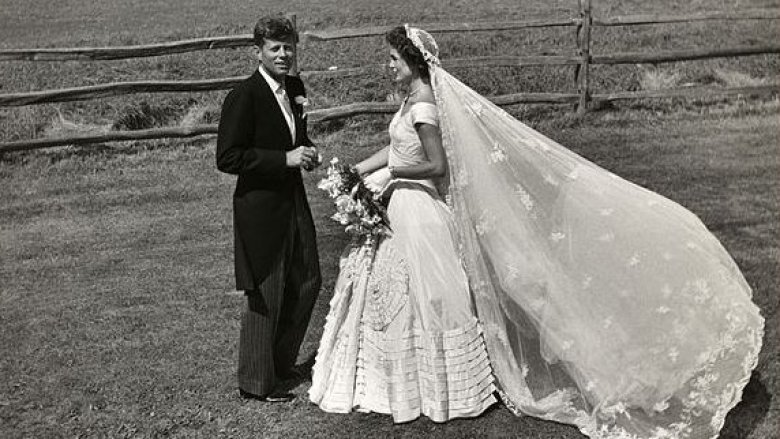
Jackie’s dress alone called for 50 yards of fabric.
They had three children, John, Jr., Caroline and Patrick. We all know about John, Jr and Caroline, but did you know about Patrick? We didn’t. Born three weeks early, he died two days after he was born from Hyaline membrane disease (a respiratory syndrome), just three months before Kennedy was assassinated.

In 1956, while still a Senator, Jack published his book “Profiles in Courage”, short biographies describing acts of bravery and integrity by eight of our United States Senators – John Quincy Adams, Daniel Webster, Thomas Hart Benton, Sam Houston, Edmund G. Ross, Lucius Lamar, George Norris, and Robert A. Taft. He won the Pulitzer Prize. I read it once, many years ago as a teen, when it was part of a Reader’s Digest book club my mom ordered for me. I’d really like to read it again.
Jack fulfilled his father’s dream when was elected 35th President of the United States in 1960, and the first Roman Catholic.
Have you always believed he was our youngest president? He wasn’t. Just the youngest elected (43). Teddy Roosevelt was the youngest, at 42, when he was promoted from Vice President after the assassination of President William McKinley. (by the way, in case you’re wondering, Obama was number five, behind Clinton and Grant)
He was the fourth president assassinated in office (Lincoln-1865, Garfield-1881, McKinley-1901).
He narrowly beat Richard Nixon in the popular vote. His Vice-President was Lyndon B. Johnson, who retained the presidency until 1968, when Nixon gained entrance to the White House.
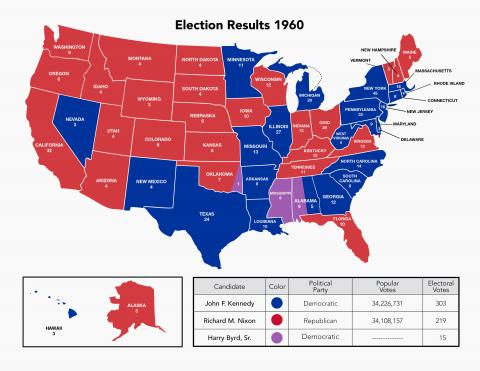
Elected at a time when our nation was suffering unrest, he was embroiled in a variety of issues – Bay of Pigs, Cuban Missile Crisis, Civil Rights, and let’s not forget, he was Catholic, at a time when despite the propensity of Catholics in our nation, many believed one shouldn’t govern our country.
In my search for a list of a few things, I ran across this as part of an article by the job search/connecting company, Monster.com. I thought it was humorous, but also made a wonderful point!
He was in the Navy in WWII
When the boat he commanded was rammed by an enemy ship, he pulled an injured crewman through the water with the man’s lifejacket strap in his teeth. He literally saved a man’s life with his teeth.
This means that when an intense email rams its way into your inbox and you have to pull your co-workers out of the wreckage, be happy that you’re not about to sink in the Pacific with a sweaty life jacket strap in your mouth, because you’re not JFK and you probably wouldn’t make it.
The rest, I’ll leave for the pictures I took at the Book Depository. Some will most likely be the same ones from the post for that day.

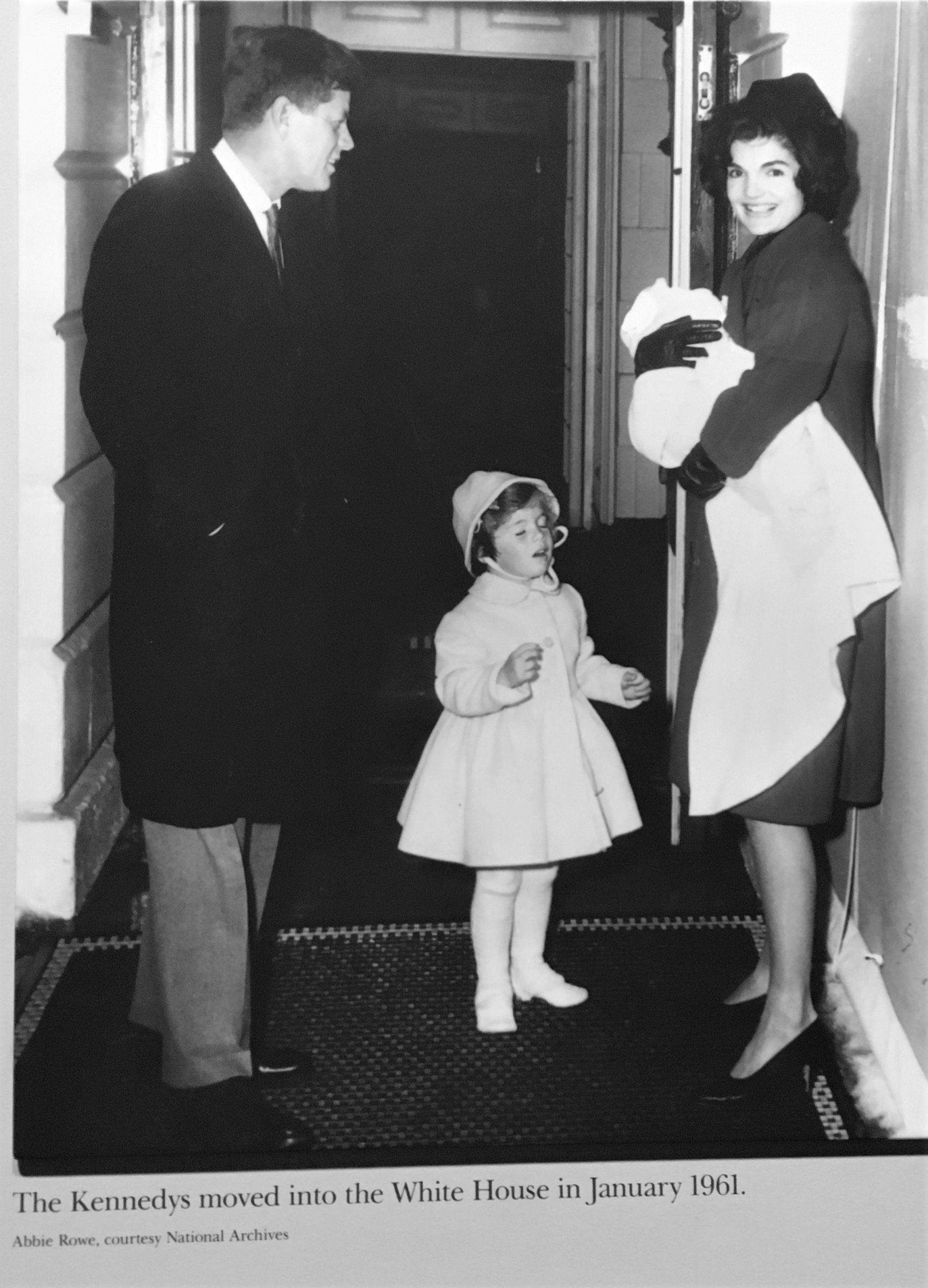


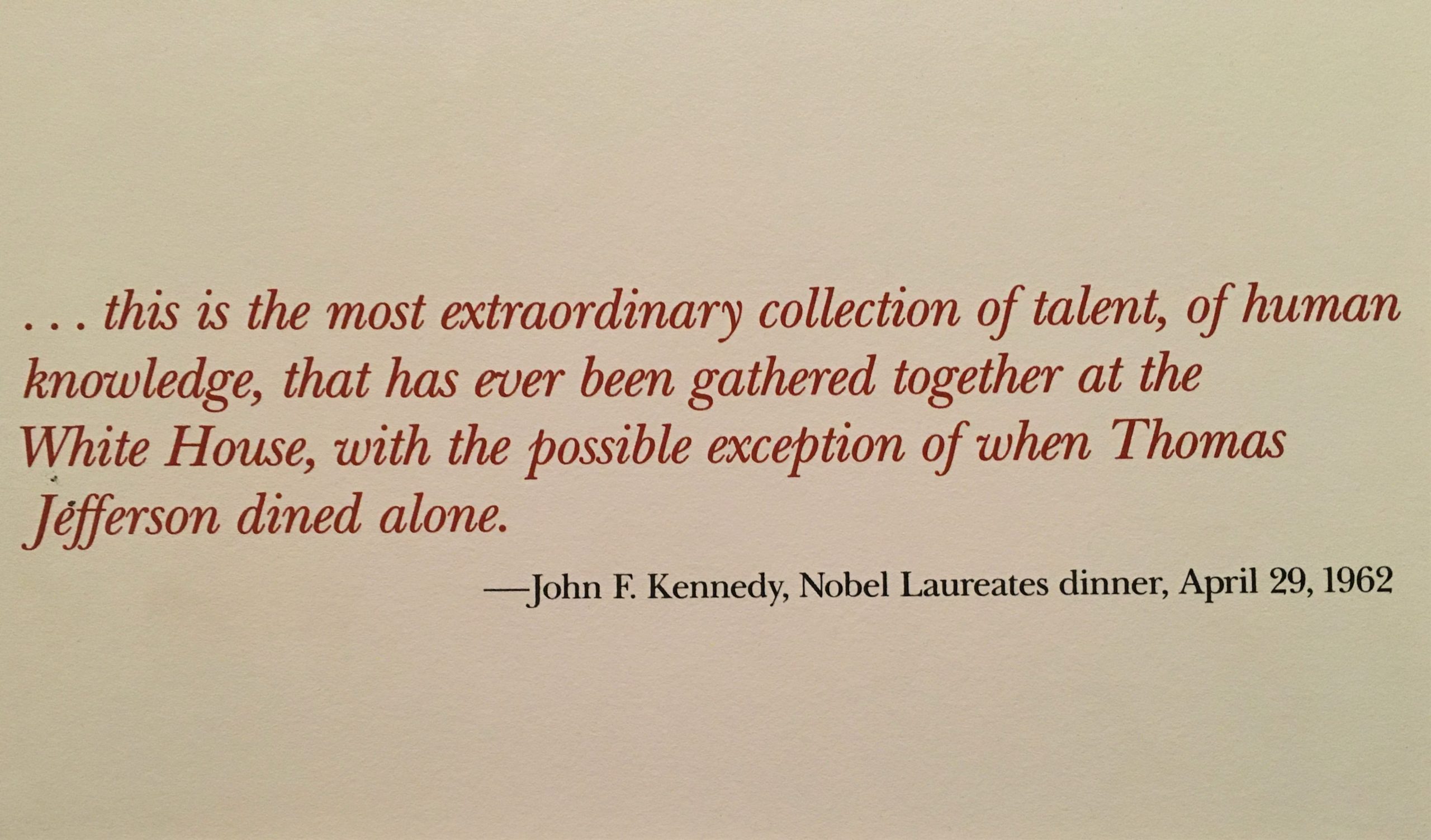
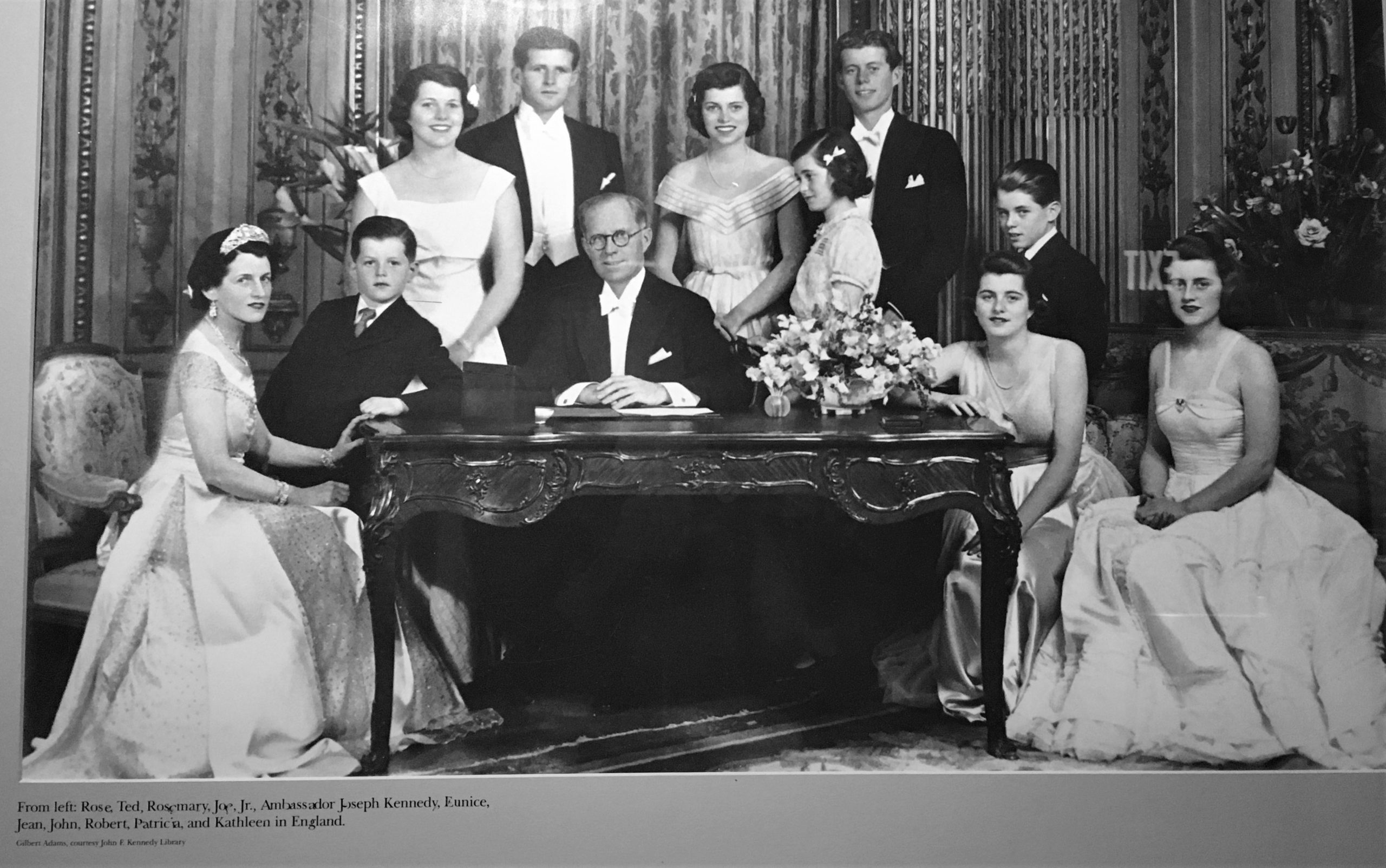













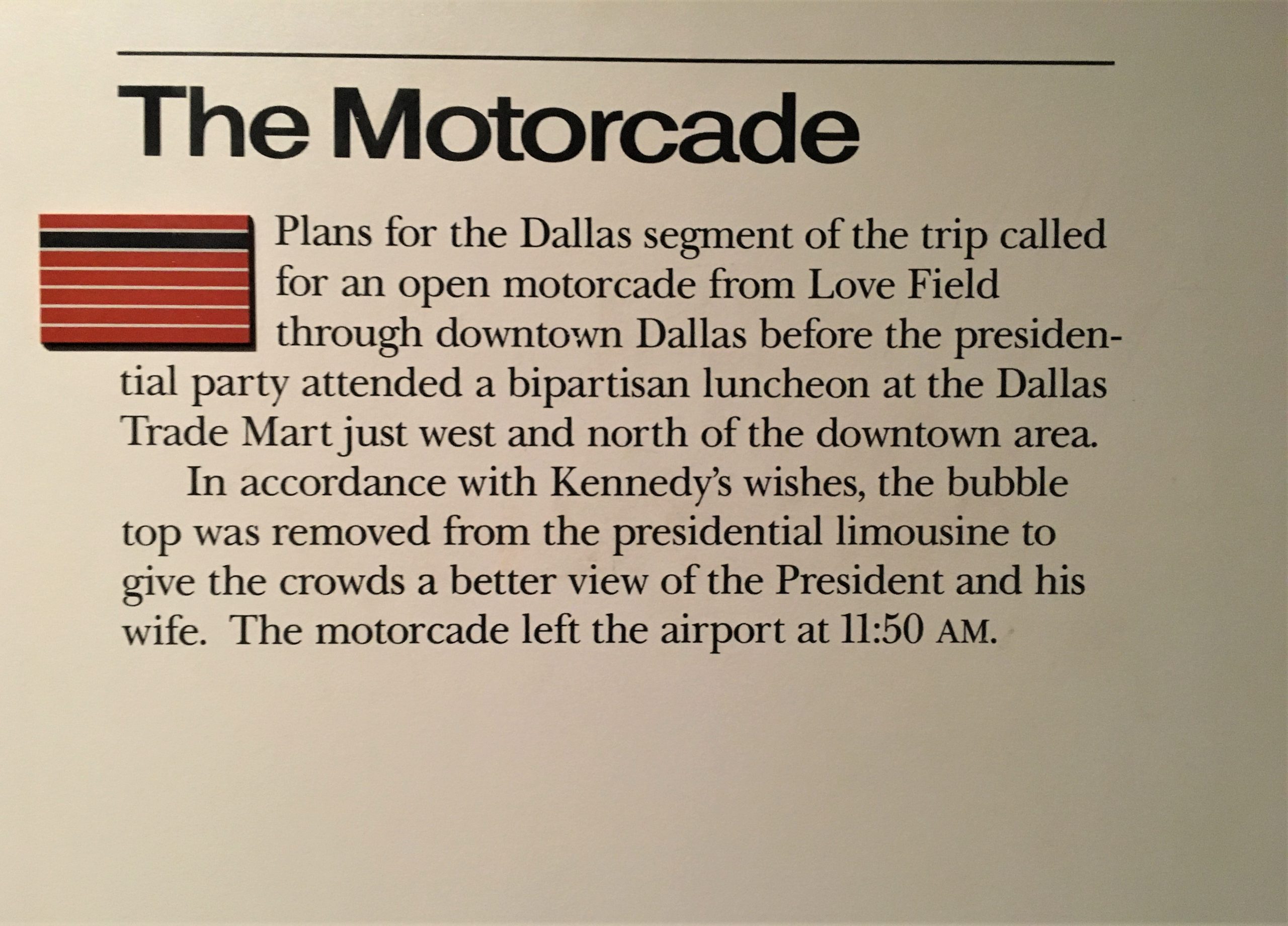
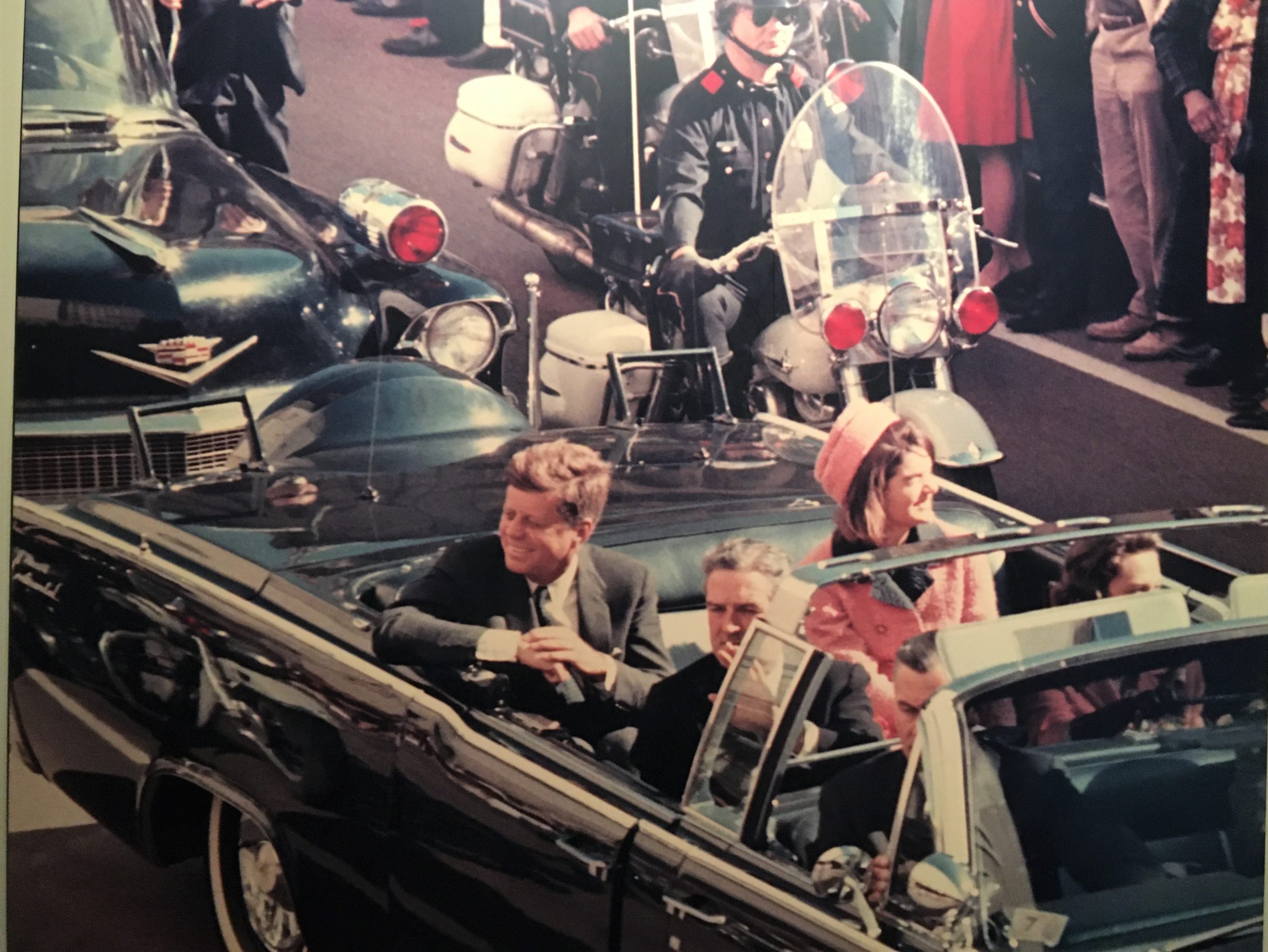
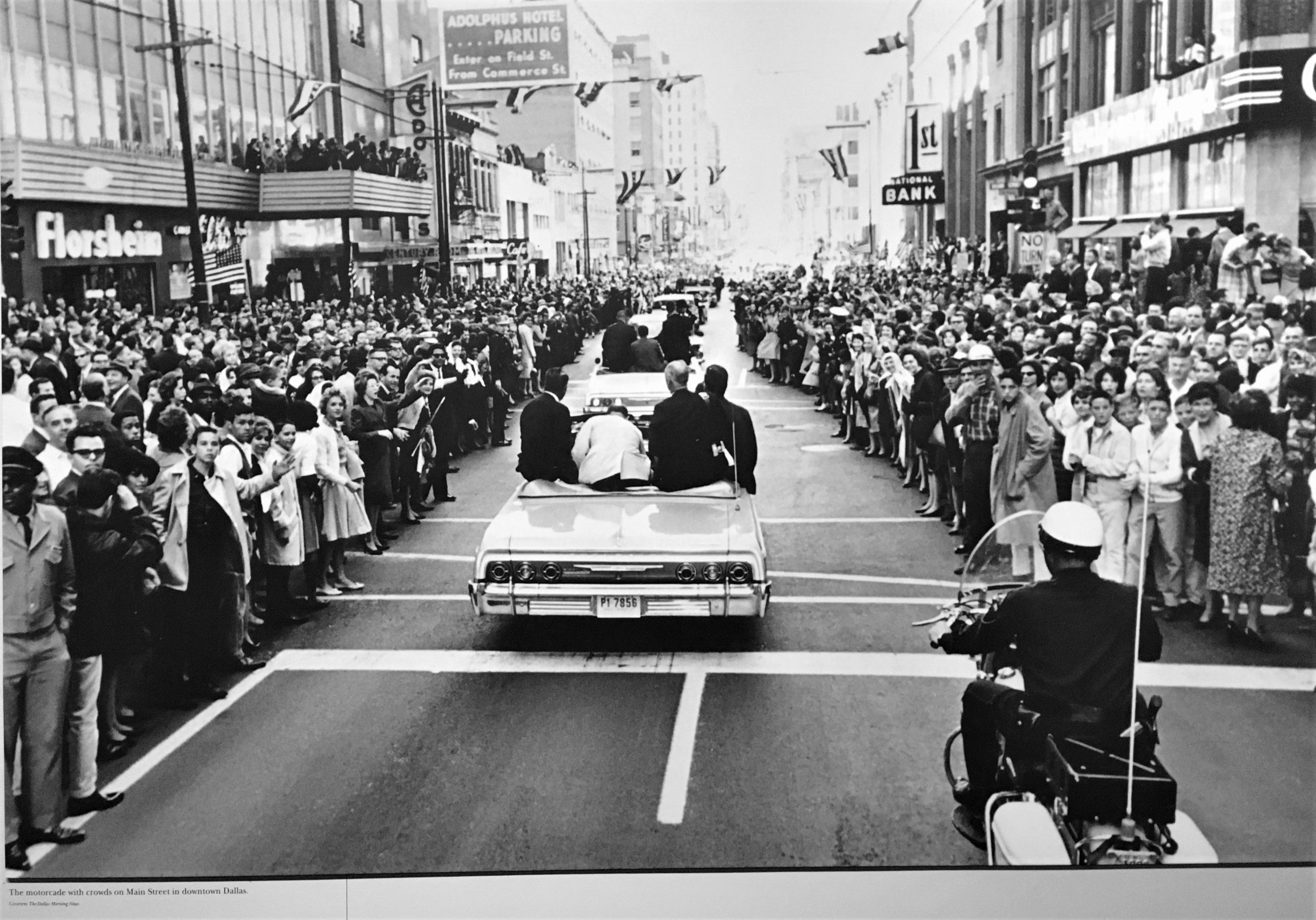

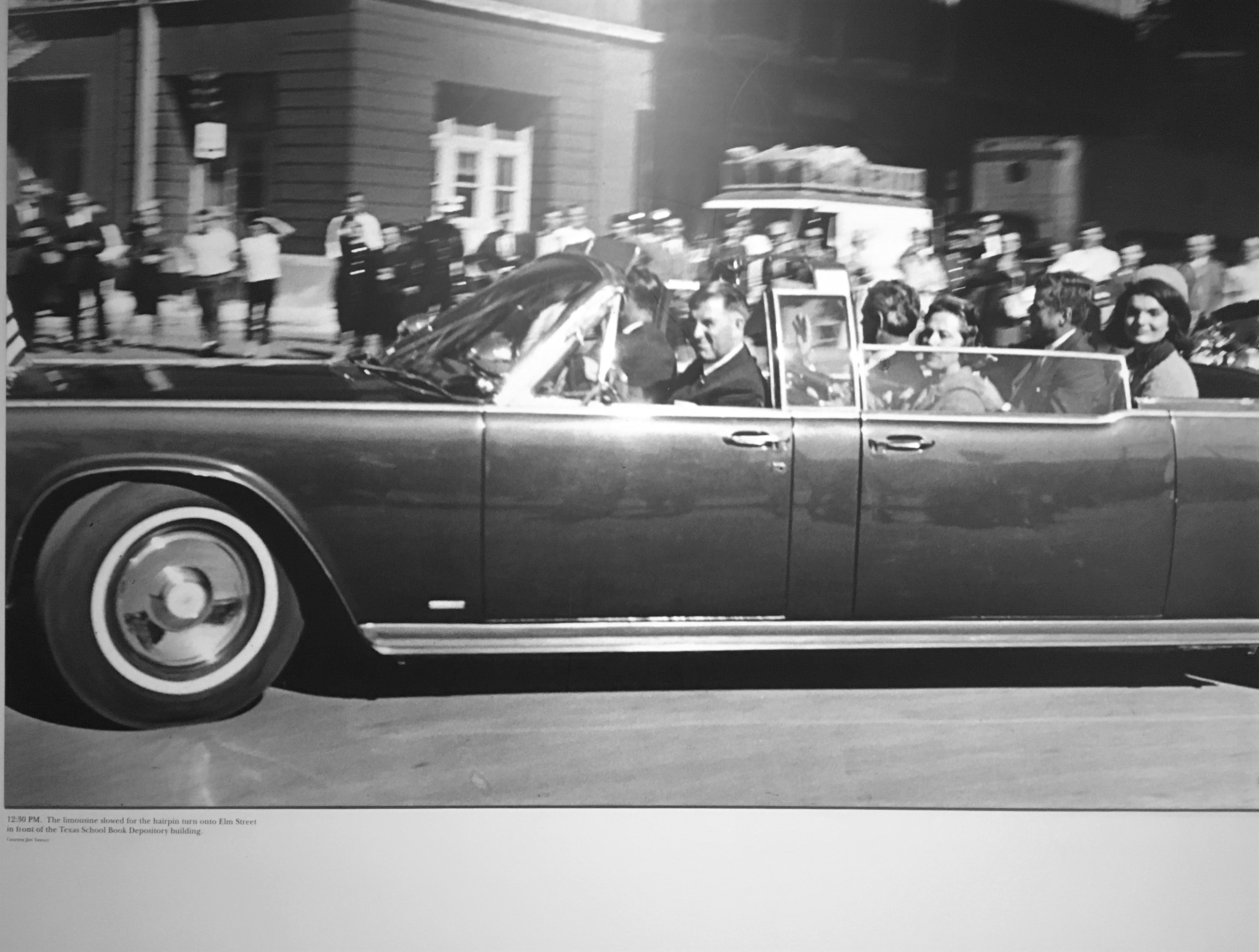




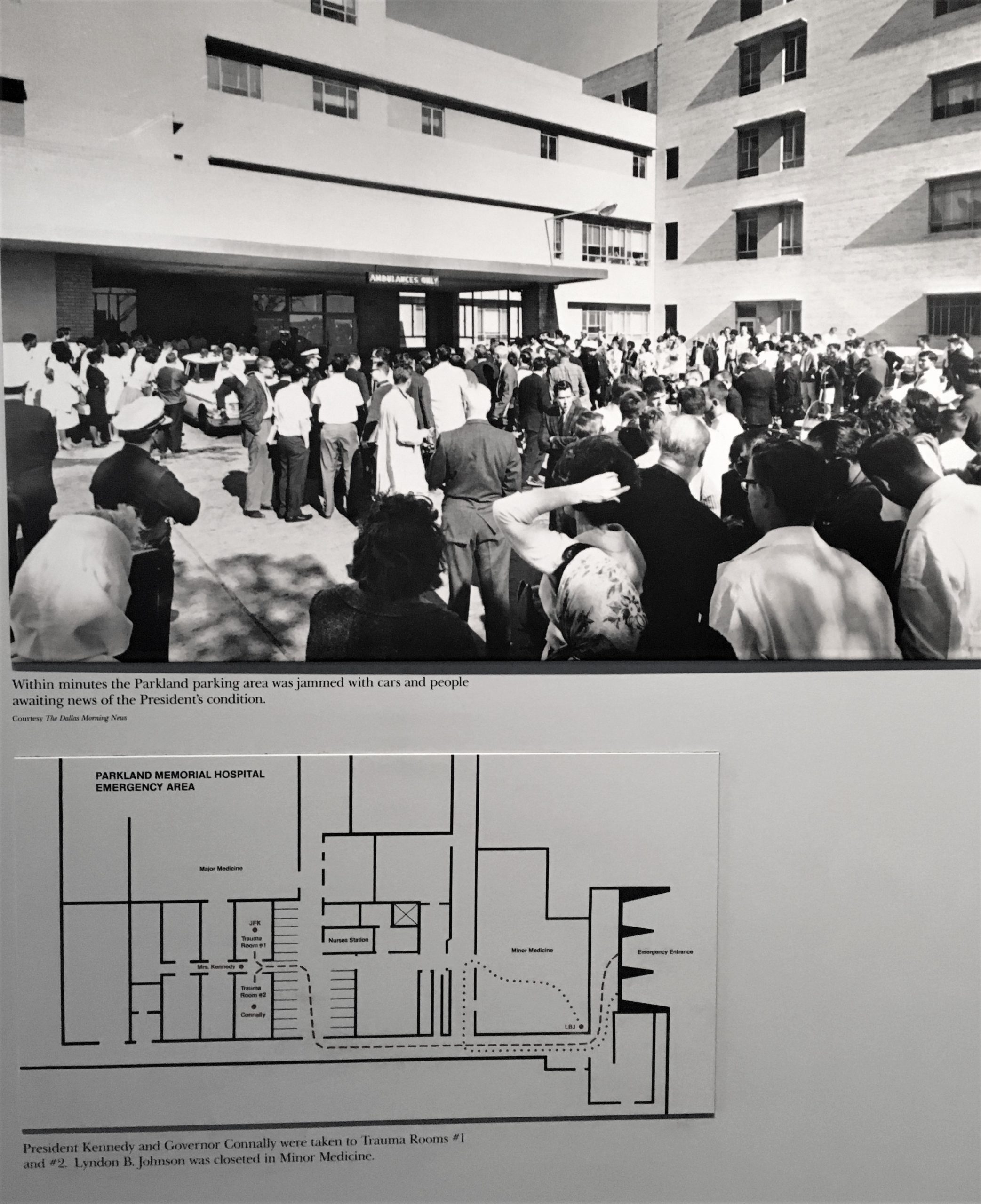




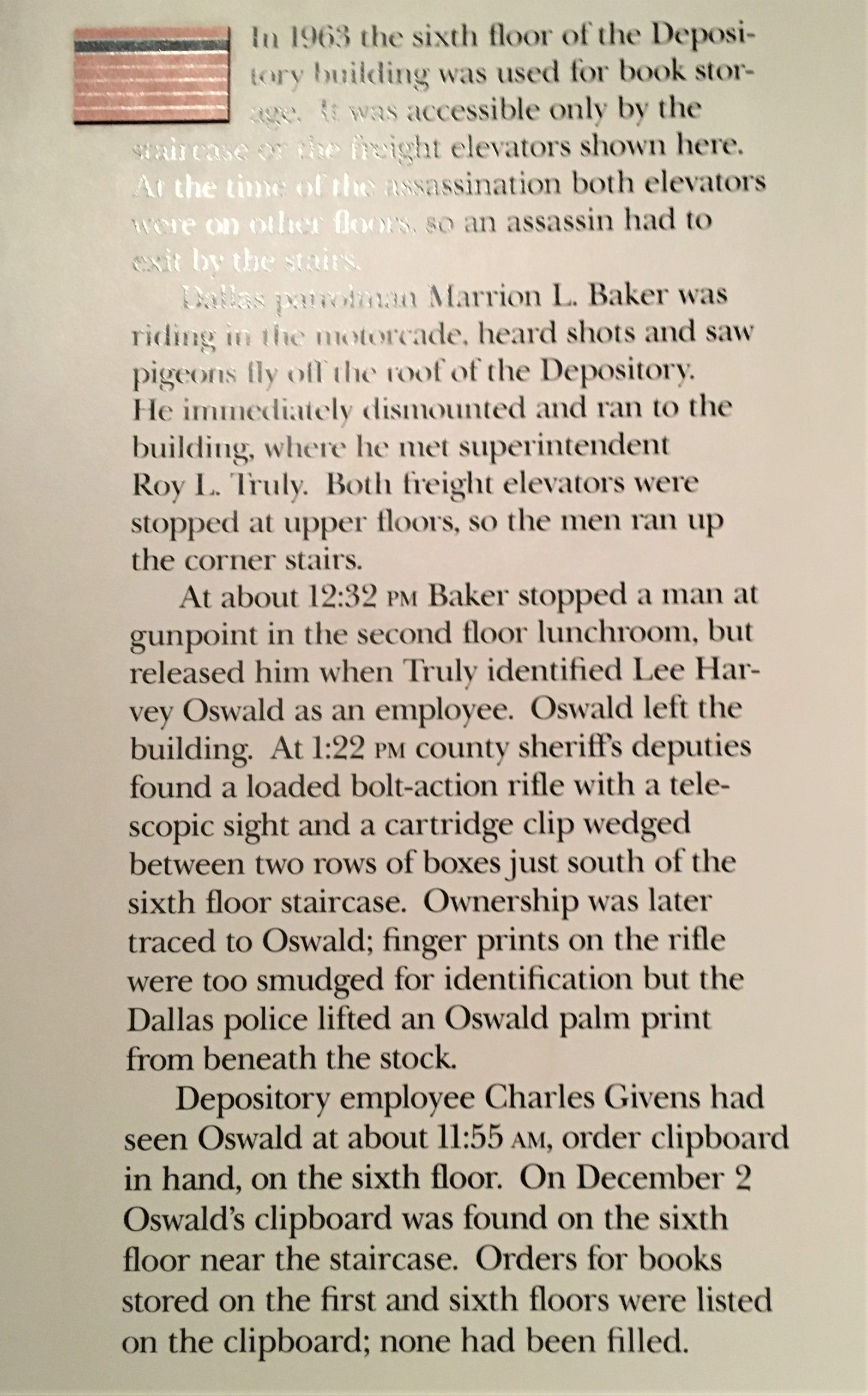

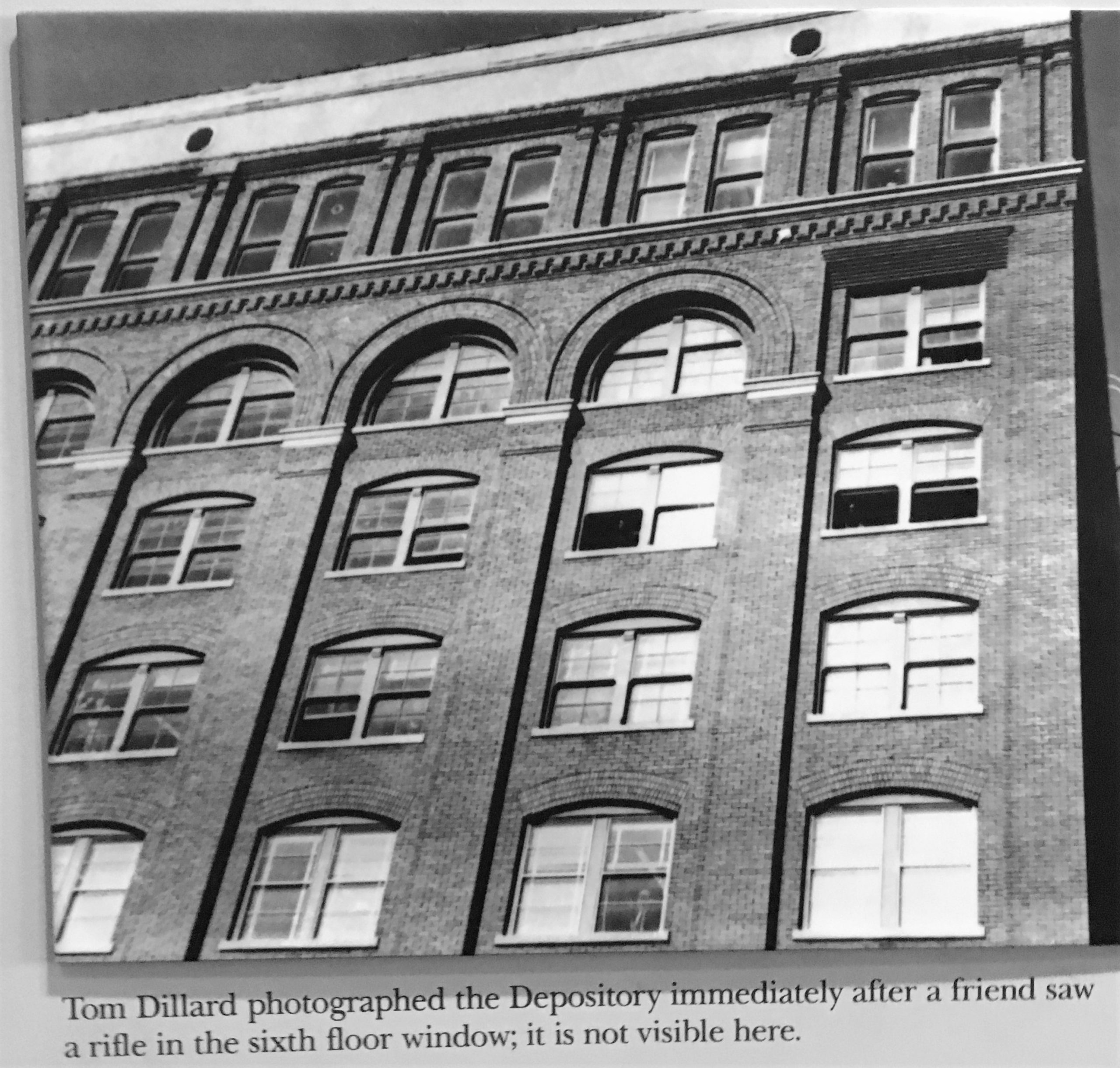

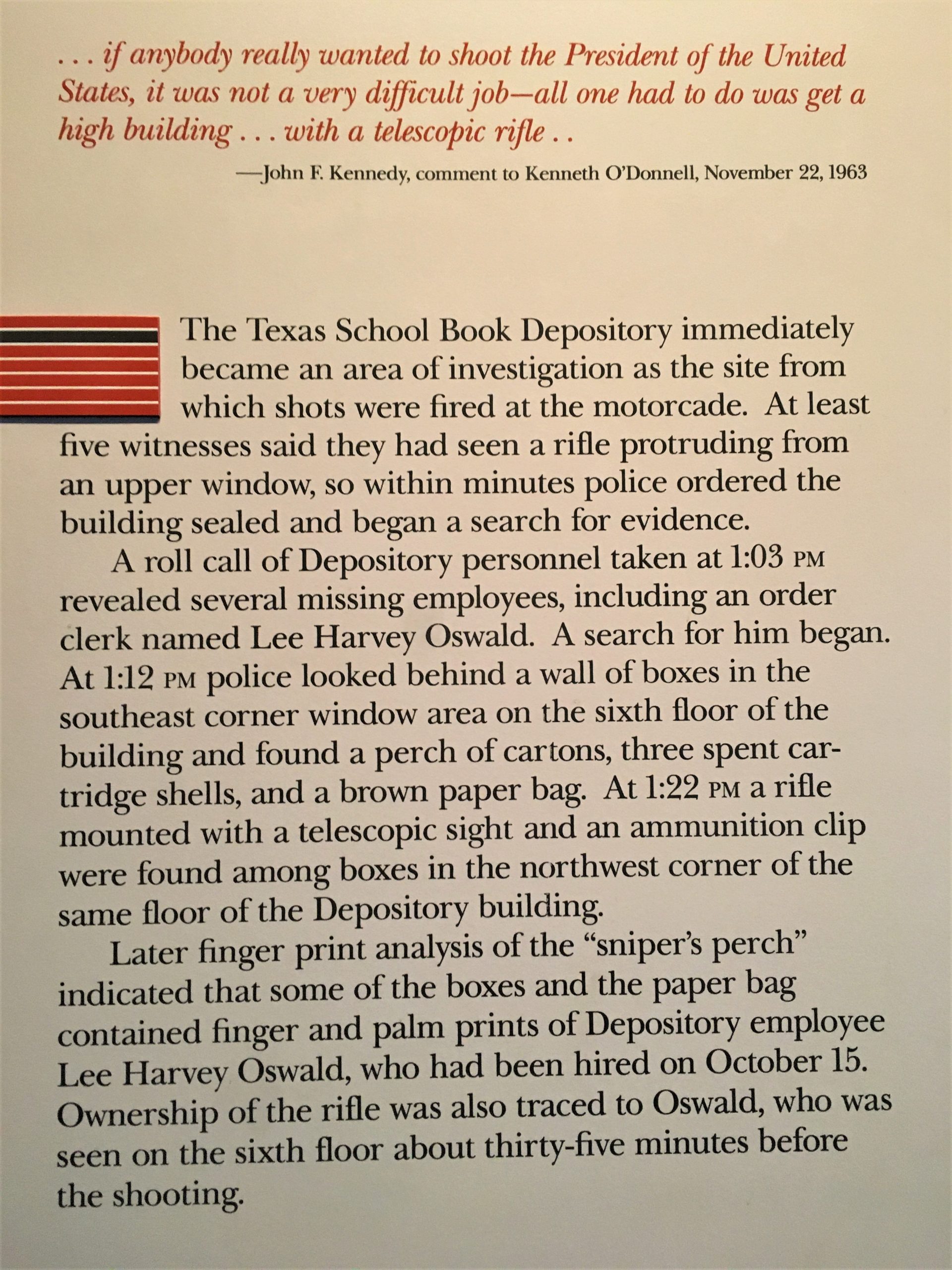
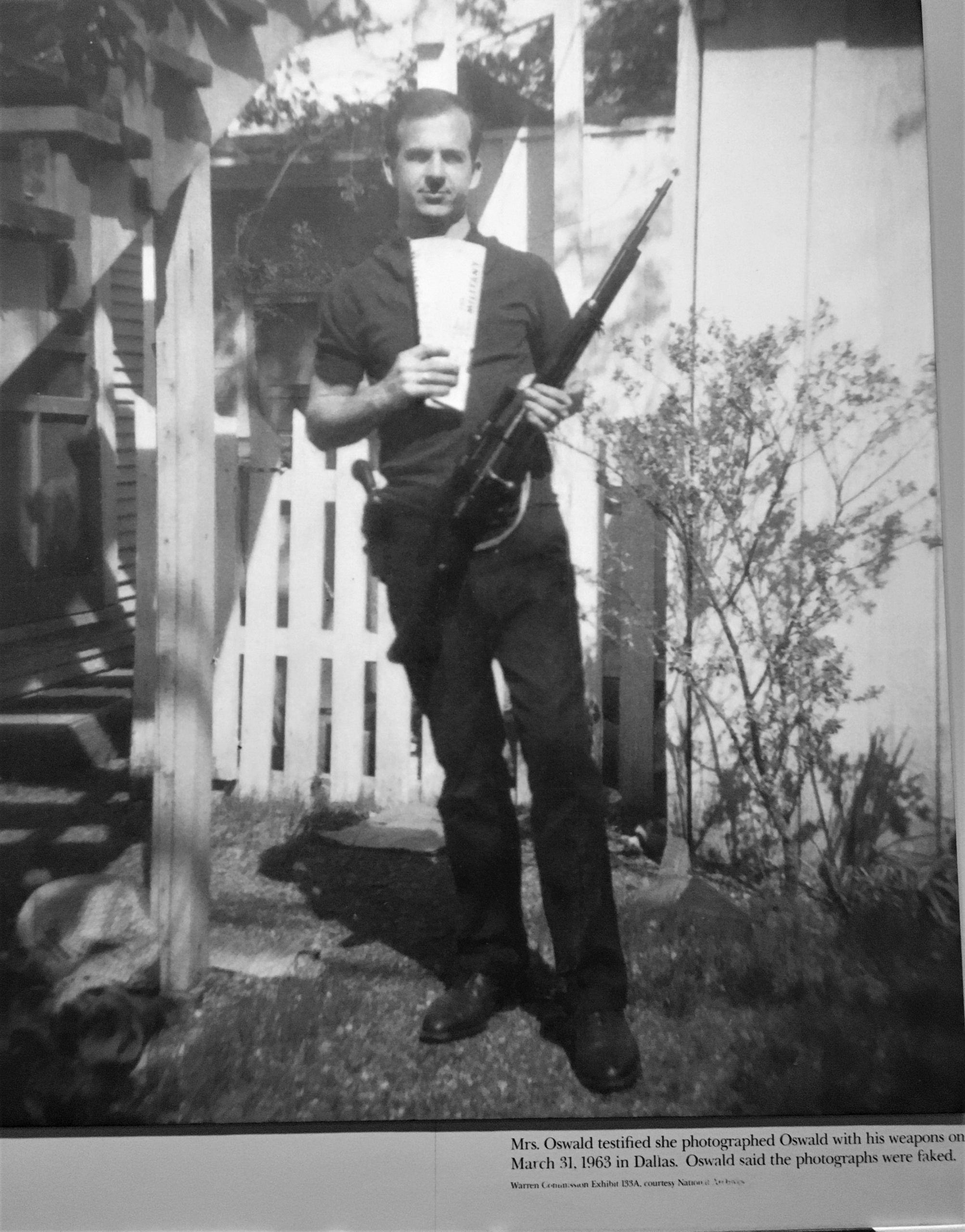

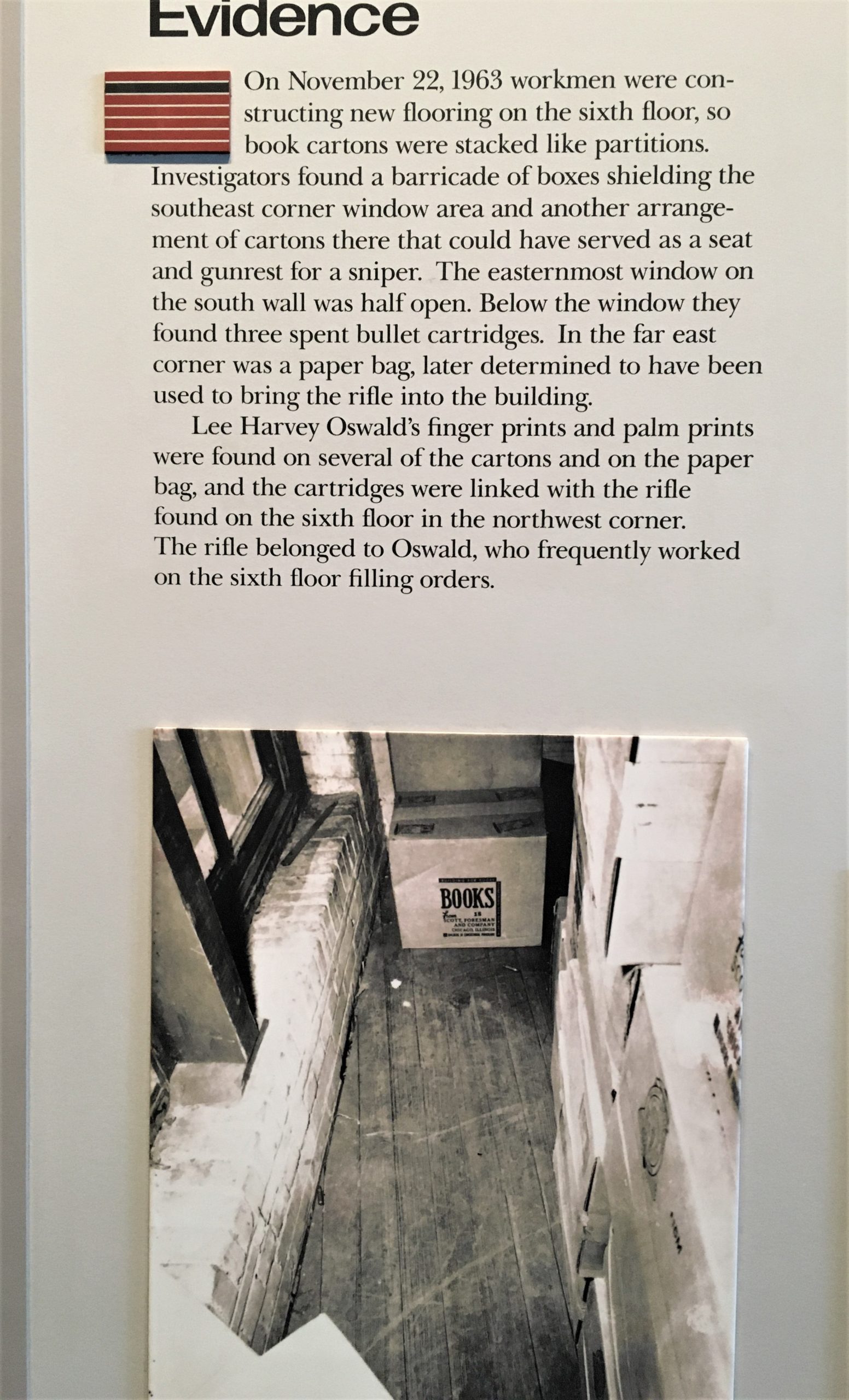



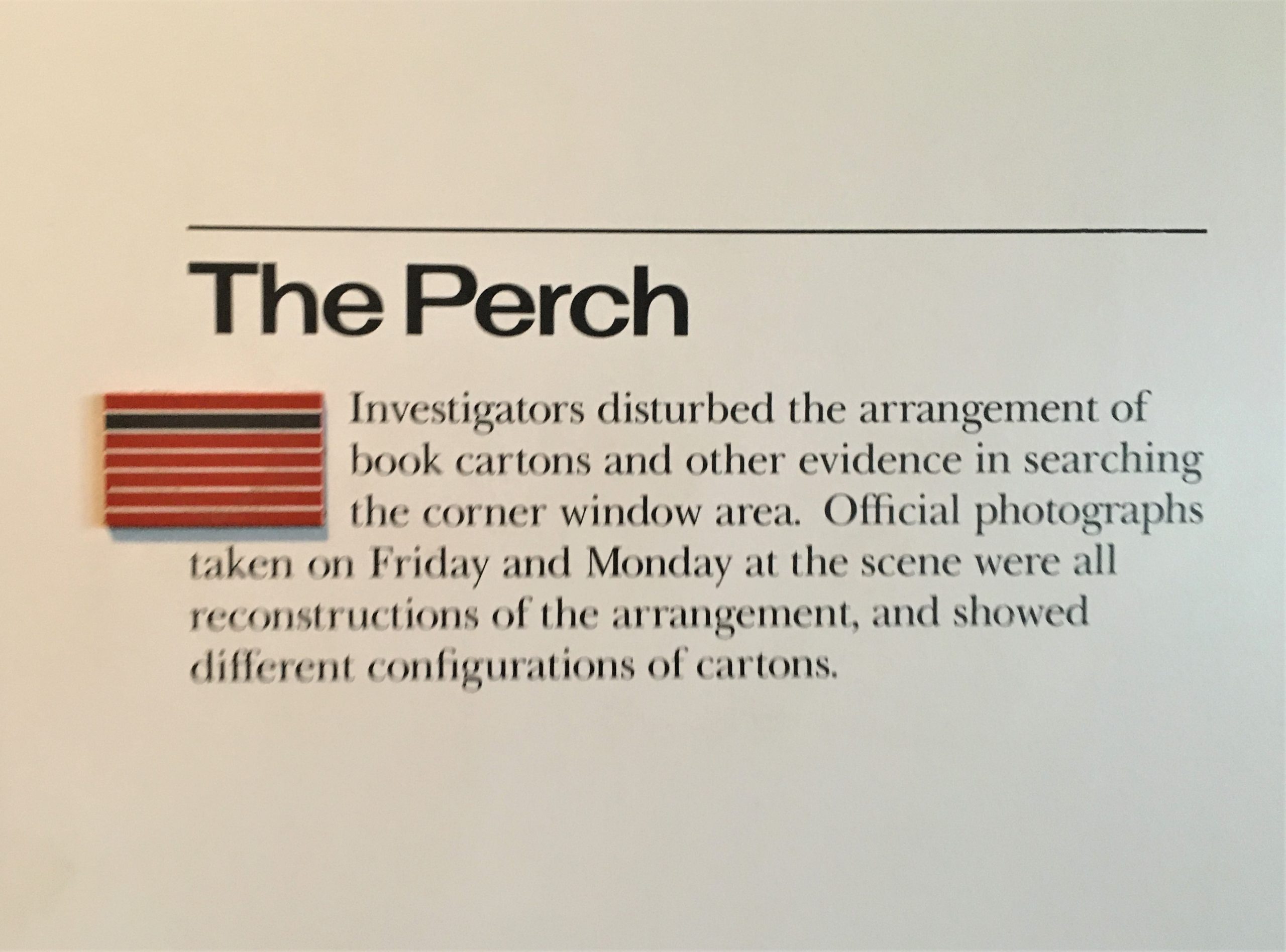








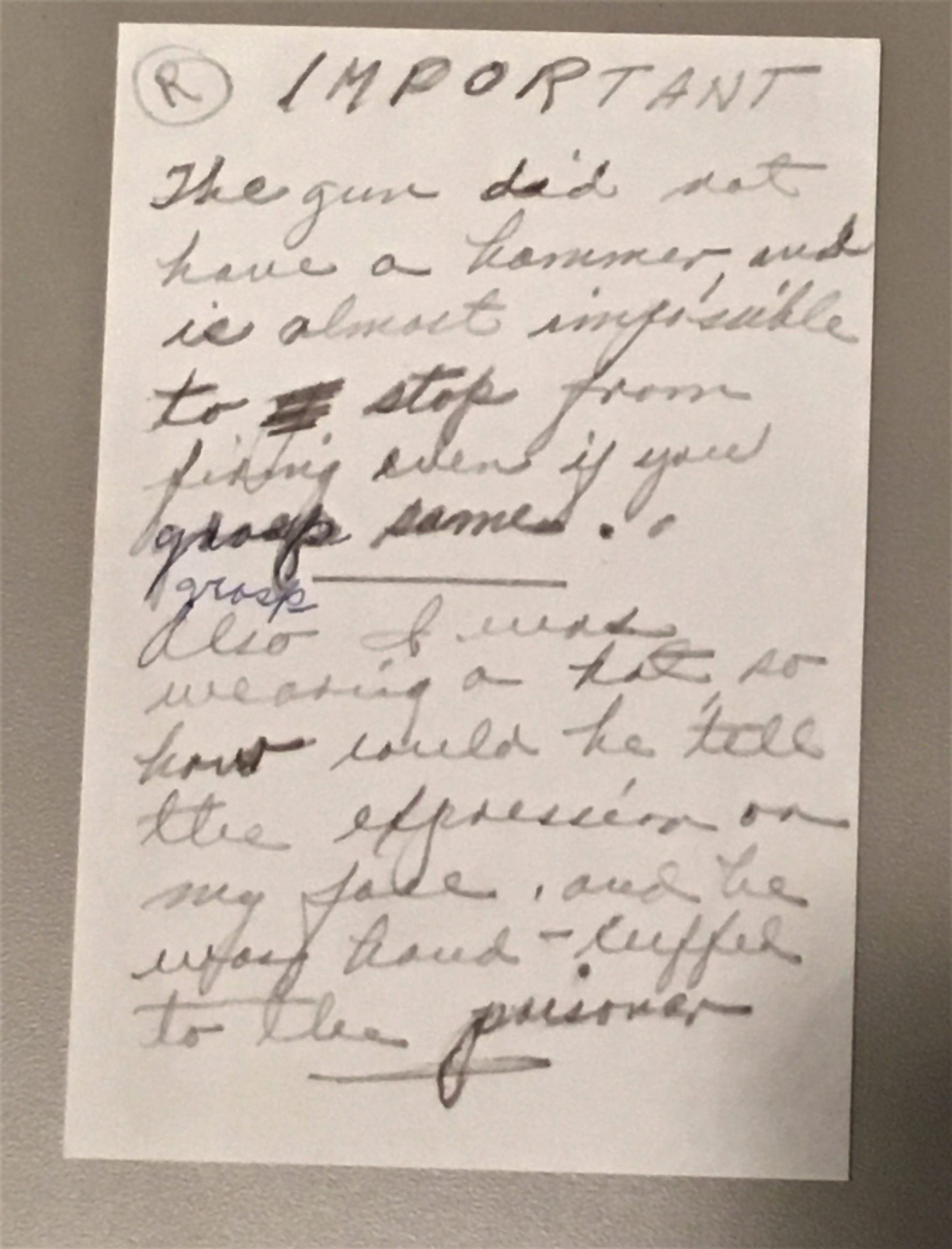



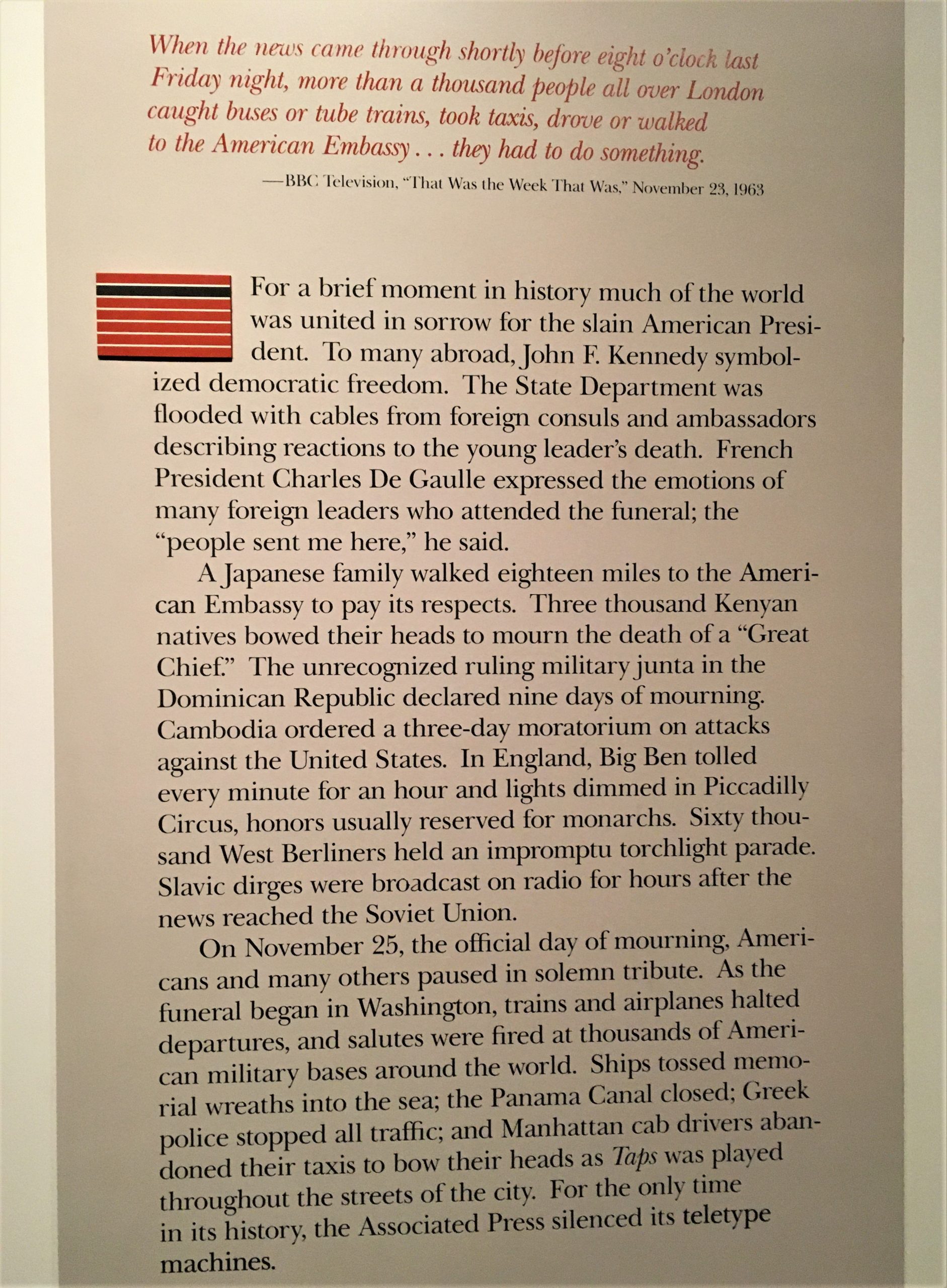



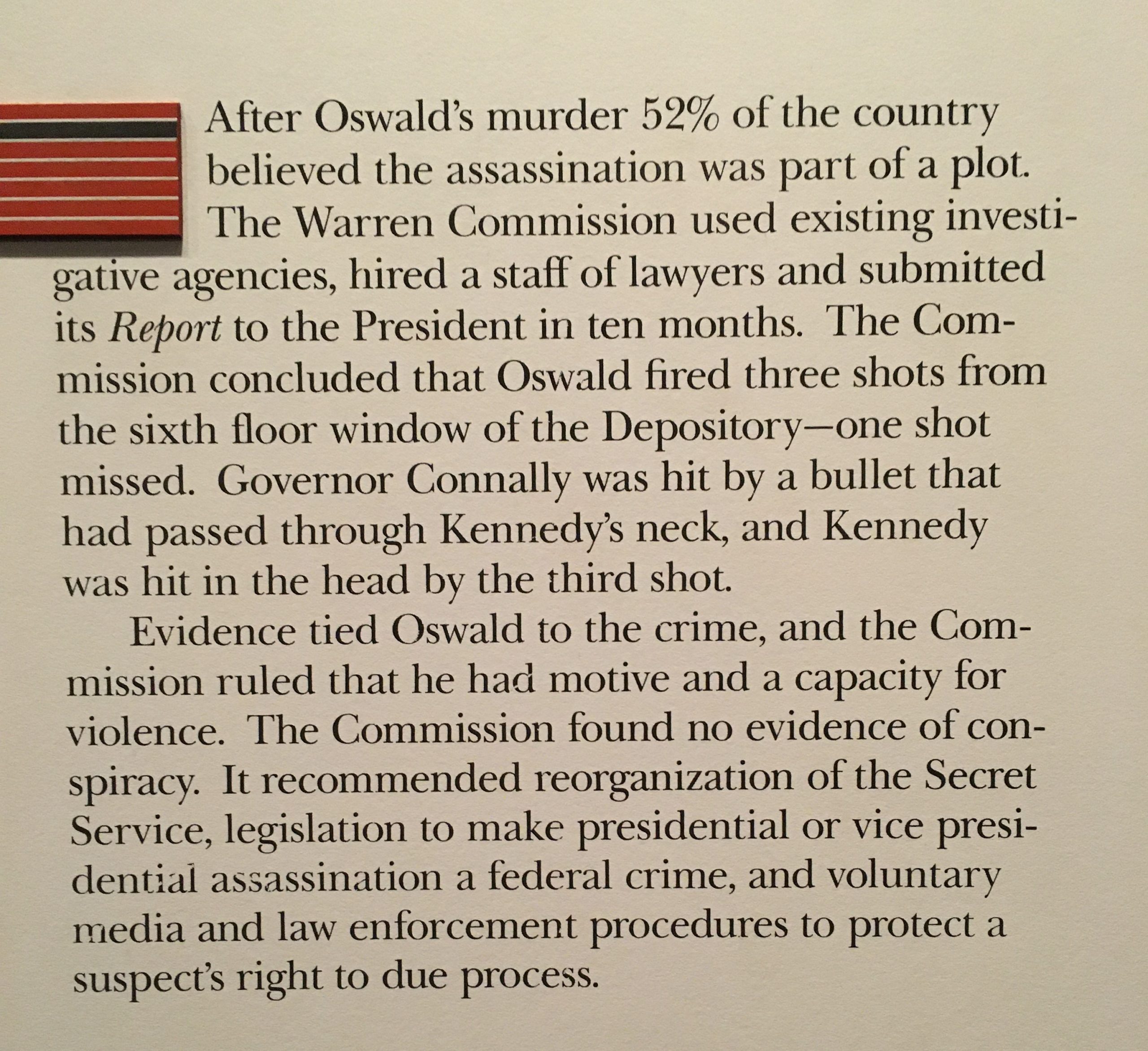



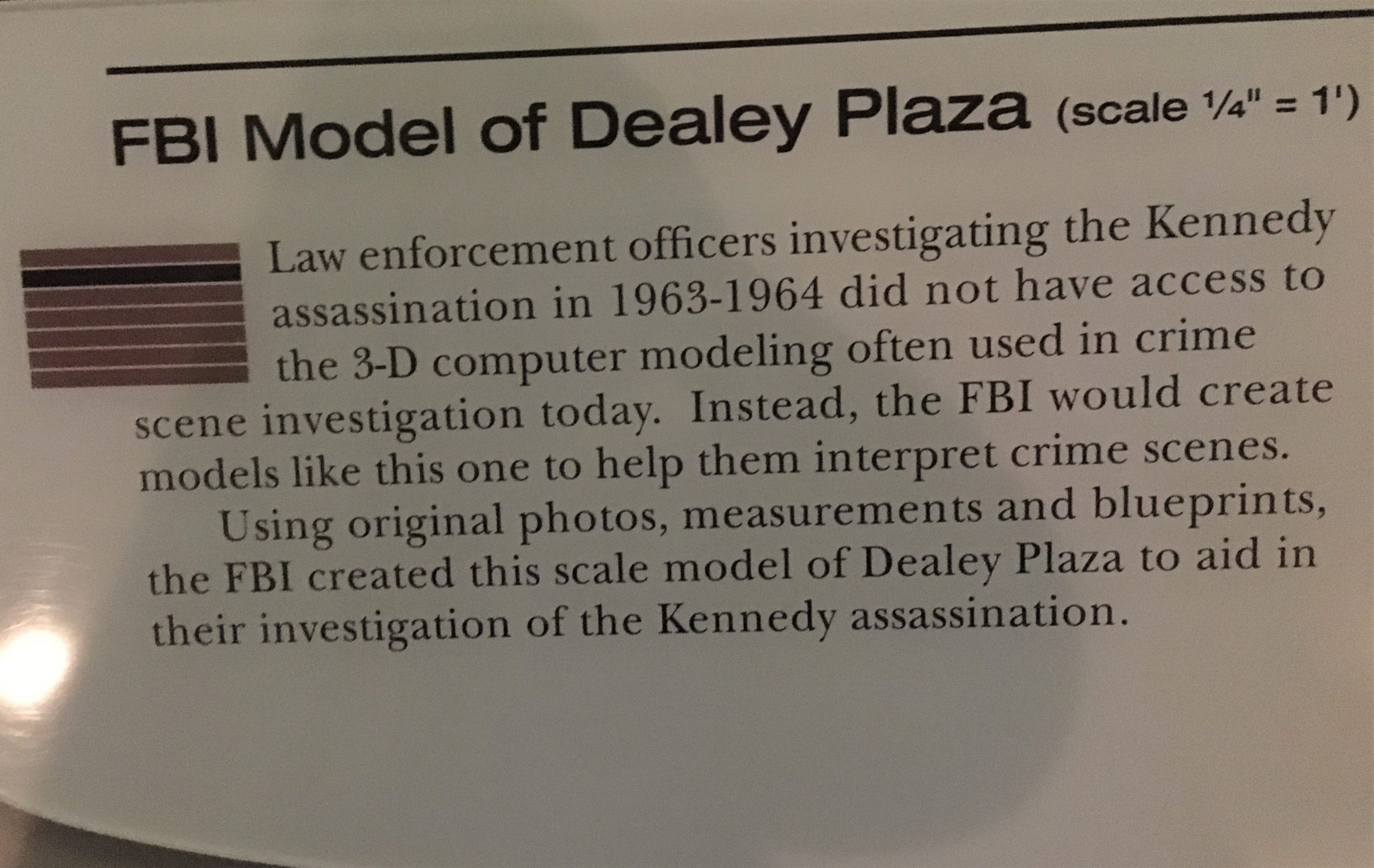








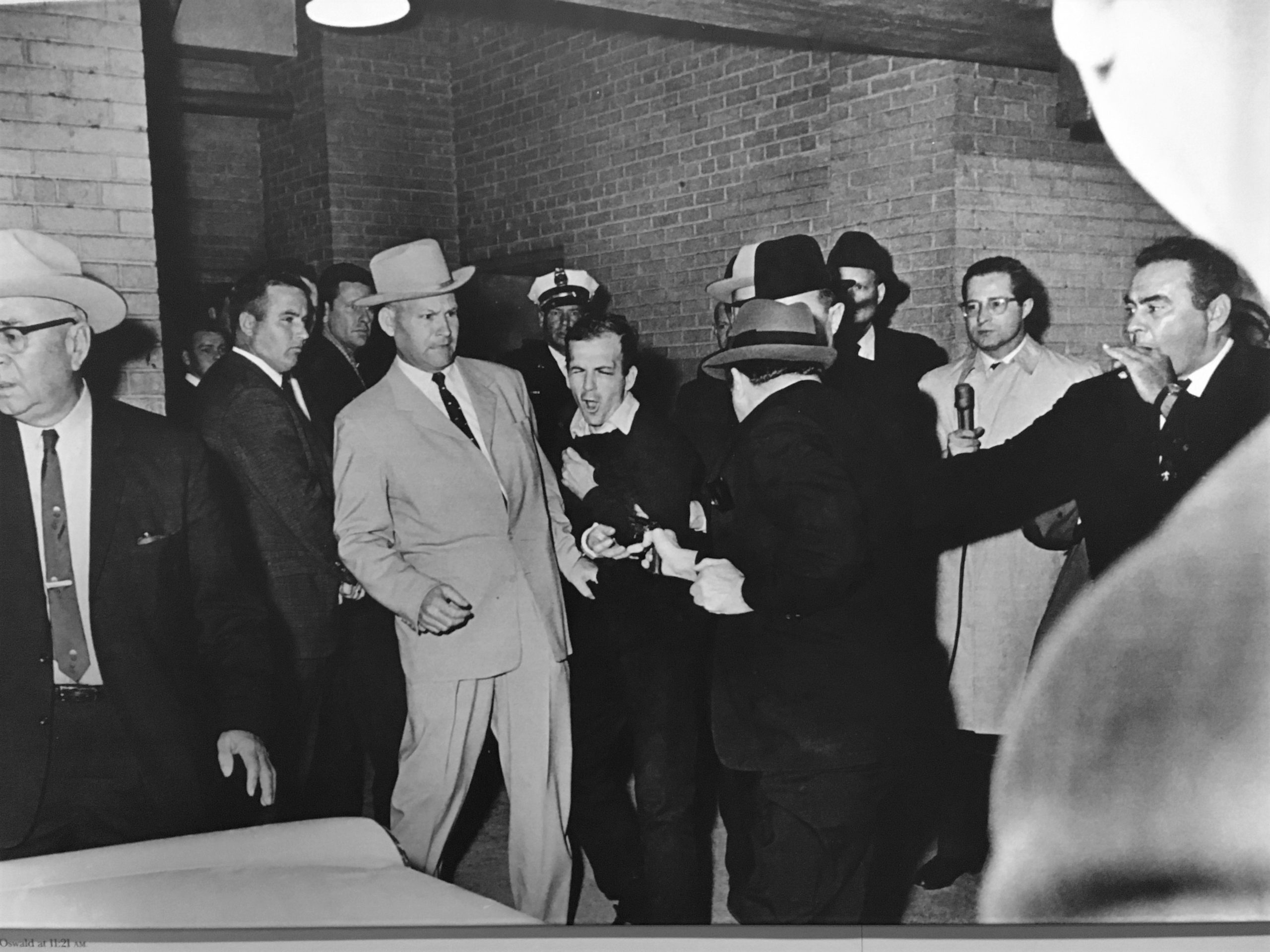
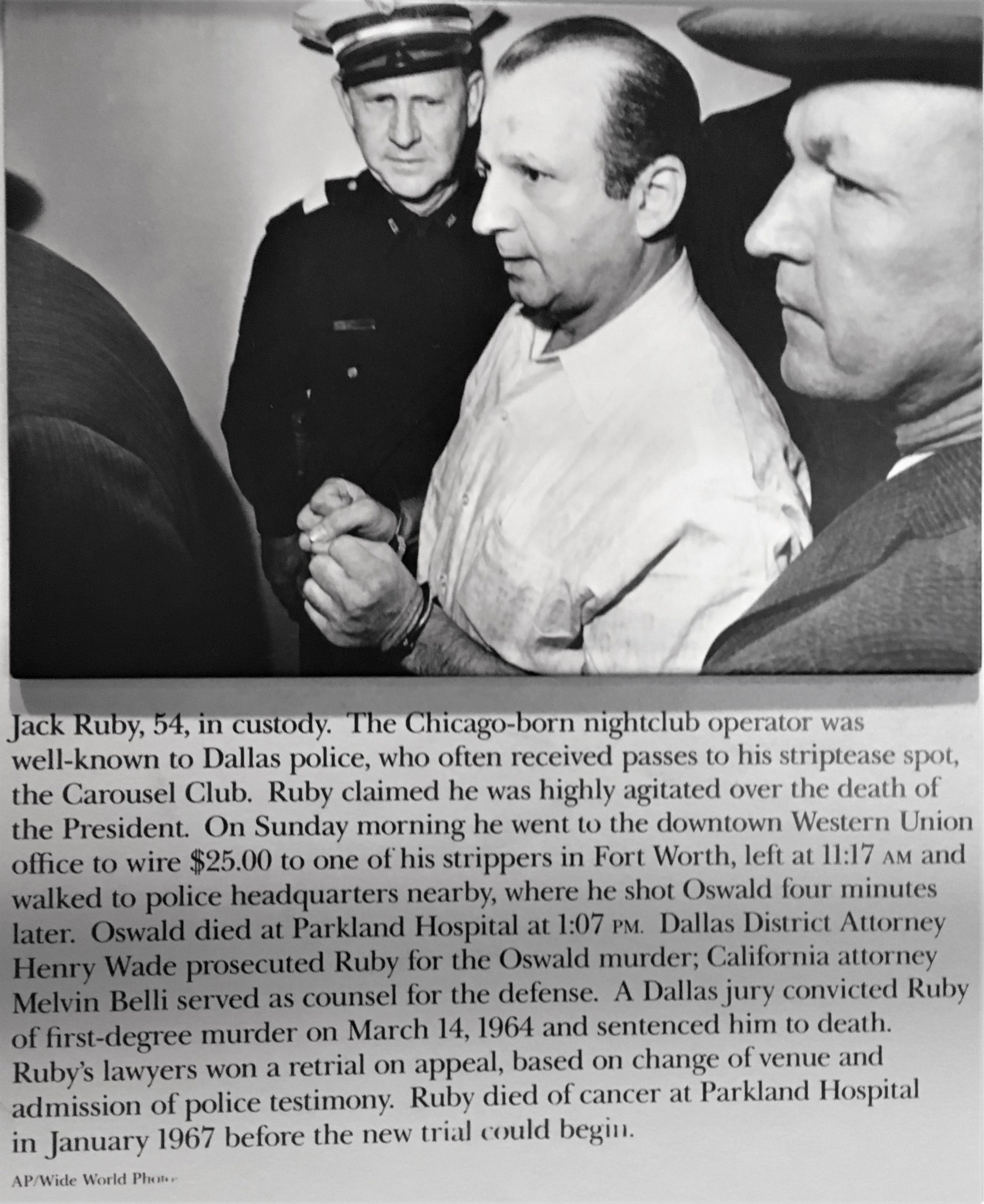


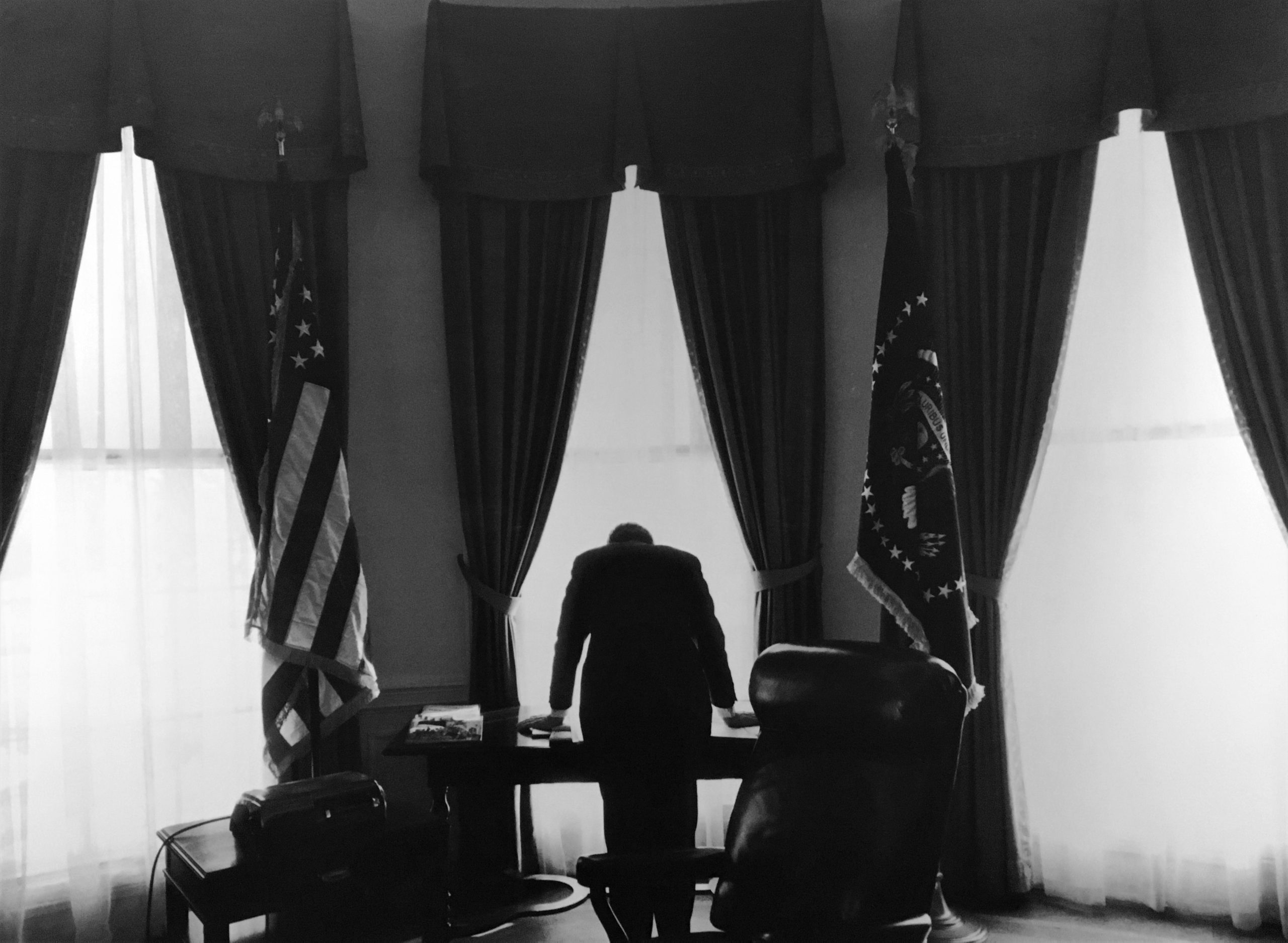

Lives filled with so much tragedy, and yet, there’s no doubt that President John Fitzgerald Kennedy – in fact almost all the Kennedys past & present have made a positive impact on our Nation.
